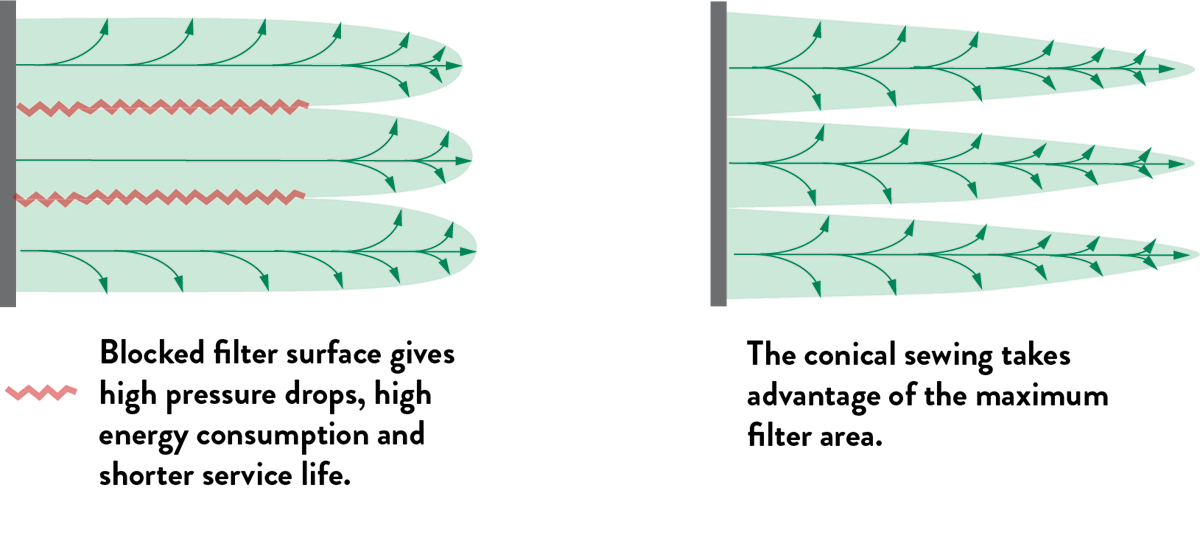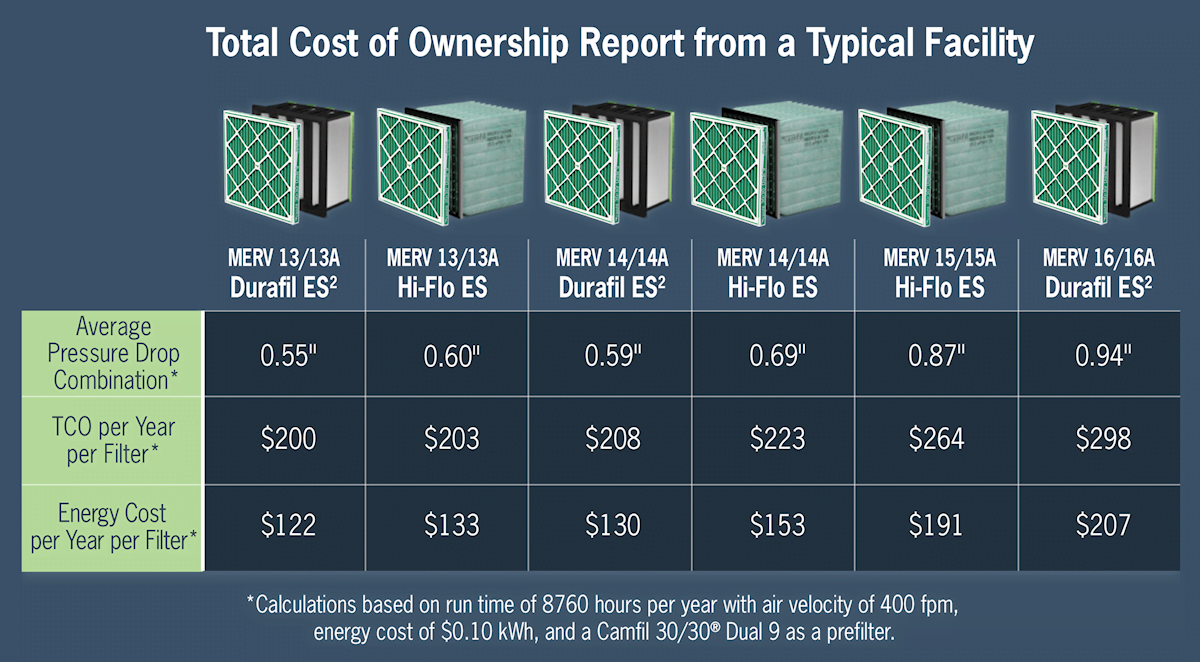The most important task for an air filter is to reduce the number of particles and pollutants in the ventilation air and to provide a high quality of indoor air (IAQ). Low energy consumption should never be prioritized over efficient air filtration and good air quality. However, these two are not mutually exclusive. High indoor air quality with significant energy savings is possible to achieve if you carefully evaluate the overall performance of the air filters installed in your property.

To keep pressure drop as low as possible and save energy costs within the different filter classes, the filter's construction/design of the air filter is of utmost importance. Increasing the amount of filter media, choosing the right media, and optimizing the shape of the bags or media pack results in lower pressure drop.
For example, a diagram of a bag filter shows the design of pockets is conical in shape which prevents them from blowing together and blocking the filter surface. This design promotes airflow, reduces pressure drop which lowers energy consumption. This is done without compromising the particle capture efficiency of the filter (degree of separation).



Camfil has developed a tool for calculating and analyzing total cost of ownership of an air filter known as Life Cycle Cost (LCC). This software accurately models all performance and cost aspects of not just our filters but most competitive filters as well. We are happy to help you with your calculations and share support in selecting the right air filtration product.
Contact your local Camfil office and we will help you further.
